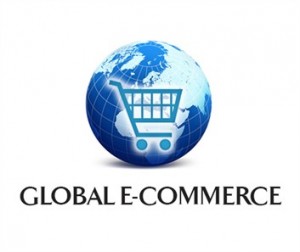by Katie Evans
 A new report and index from the United Nations Conference on Trade and Development examines e-commerce in 130 economies across the globe and finds East Asia poised for growth among developing and emerging economies.
A new report and index from the United Nations Conference on Trade and Development examines e-commerce in 130 economies across the globe and finds East Asia poised for growth among developing and emerging economies.
The index, entitled “Information Economy Report 2015,”examined Internet use, prominence of secure servers, credit card penetration and postal delivery networks to determine what it called each region’s readiness for business-to-consumer e-commerce. Based on those criteria, the index then ranked the readiness of economies on a scale of 1 to 100. Assessing e-commerce readiness can serve as a first step towards formulating a national e-commerce strategy, according to the report.
The countries with the highest e-commerce readiness across the globe were Luxembourg (91.7), Norway (88.3) and Finland (88.1). The U.S. was No. 15 with a score of 82.0. The majority of the Top 10 economies (six out of 10) were in Europe. The Republic of Korea was the only Asian economy in the global Top 10. The number of global online shoppers will grow 50% from 2013 to 2018, from 1.079 billion to 1.623 billion, the report says.
“As the digital economy expands and more business activities are affected, it becomes more important for governments to consider policies that can help to harness e-commerce for sustainable development,” Mukhisa Kituyi, secretary general for the conference on trade and development, said.
The index also examined e-commerce strengths and weaknesses across each of the 130 regions. A limited home postal delivery network hampers e-commerce penetration in Latin America, the Caribbean, Asia and Oceania, which is the Australia and New Zealand region, the report notes. In Africa, e-commerce is hurt by low web penetration. However, the report notes in the Middle East and Africa the number of online buyers will grow 82% to 170.6 million in 2018 from 93.6 million in 2013. And, in Asia and Oceania that figure will be 70% in the same time period, growing from 460.3 million to 782.4 million.
Developing economies are expected to account for nearly 40% of global B2C e-commerce by 2018, while the B2C share of developed countries will fall to about 60% in 2018 from more than 70% in 2013.
China, the report notes, has emerged as the largest global market for B2C e-commerce, measured both by online buyers and by revenue. Online retail sales in China grew 50% to nearly $450 billion in 2014, according to China’s National Bureau of Statistics.
The report also finds:
- Between 2013 and 2018, the share of the Asia and Oceania region in global B2C e-commerce is expected to surge to 37% from 28%, while at the same time, Middle East and Africa is set to grow slightly to 2.5% from 2.2%.
- In South Africa, the main reason consumers do not buy online is because they want to touch and feel a product before purchasing (49.3%). That was followed by not trusting online payments (36.8%).
- The portion of individuals using the Internet who have made an online purchase varies widely by country, ranging from less than 5% in Mexico and Thailand to between 60% and 70% in Germany, Austria, Denmark and the United Kingdom.
- While the share of web users who buy online is relatively low in developing regions, the use of social networks is high. For example, about 80% of Internet users in Mexico use social networks.
- South Korea ranks first in Internet sales as a percentage of total sales. The web accounts for 16% of total retail sales in the country.
- Clothing and accessories sales lead the way for online buying globally. That category ranks first in Asia and Oceania with 57% of online buyers planning to make that type of purchase in the next six months. It’s also first in Europe with 34% and leads as a web product shopping category in Latin America (28%) and North America (42%).
- Cash on delivery is most prominent in Africa and the Middle East when it comes to web purchases. 48% of online orders are paid via cash on delivery in those regions.
The report also notes e-commerce progress in developing countries during the past few years. “Connectivity has improved, with widespread uptake of mobile telephones, social media and rising levels of Internet use,” the report notes. “New e-commerce applications, platforms and payment solutions are making it easier to engage in e-commerce. (And) local e-companies with e-commerce services tailored to local demands are rapidly appearing in developing countries, including in least developed countries.”
The report cites Bangladesh and Cambodia as locations where new e-retailers are beginning to sell online, plus sub-SaharanAfrica, where services are enabling shoppers to purchase and pay via basic mobile phones, also called feature phones.
To further drive global e-commerce the United Nations Conference on Trade and Development suggests governments and businesses:
- Work to ensure access to reliable power.
- Strengthen logistics and delivery infrastructure.
- Implement universal address and postcode systems.
- Ease cross-border trade by simplifying and standardizing trade laws, customs and duties.
- Work to strengthen electronic payments offerings and consumer adoption of online payments.
- Promote global and local e-commerce platforms and services that can be tailored to local markets to account for currencies, languages and payment and shopping preferences.
- Develop a legal and regulatory framework for e-commerce that addresses such issues as online privacy.
- Help promote building e-commerce skills among small businesses.
- Raise general awareness of e-commerce through radio, print and Internet marketing.
